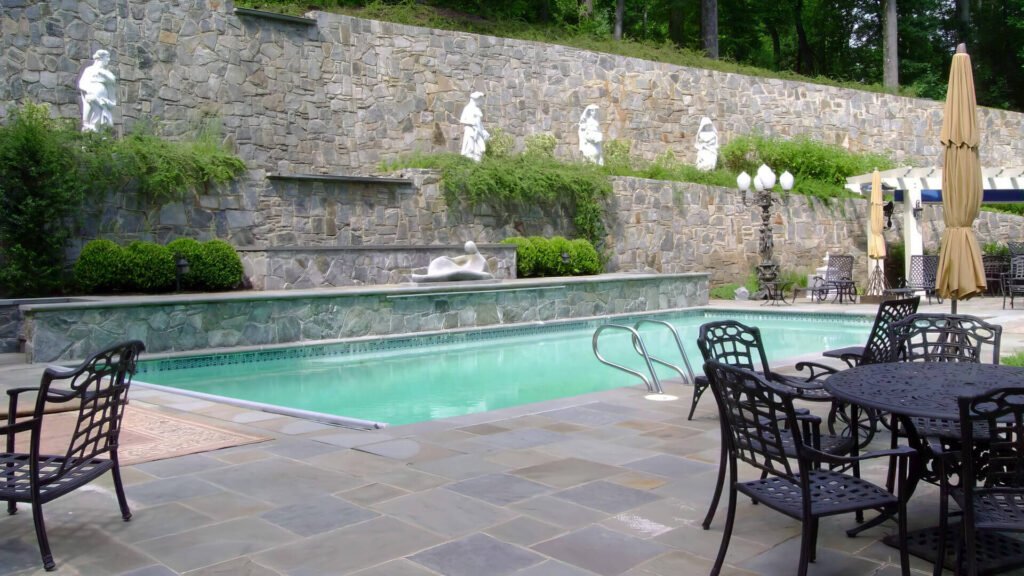If you’re considering installing a pool in a sloped or uneven yard, a pool retaining wall is essential for creating a safe, durable, and visually appealing swimming area. These walls are not just functional; they also add a significant aesthetic element to your landscaping. Here’s why pool retaining walls are a must-have for your home:
What is a Pool Retaining Wall?
A pool retaining wall is a structure that is crucial for maintaining the integrity of the area around your pool. It supports and stabilizes the soil that would otherwise shift due to uneven landscapes or natural slopes. The primary purpose of these walls is to combat erosion, hold back earth, maintain level ground necessary for pool construction, and ensure that your pool area remains structurally sound.
The Importance of Pool Retaining Walls
- Structural Stability: Retaining walls provide the necessary support to the landscape around in-ground pools, especially in sloped areas. By holding back soil, these walls prevent the ground from collapsing or slipping, thus avoiding potential damage to the pool structure.
- Water Management: These walls are integral in managing water flow around the pool area. Properly designed retaining walls can help divert water away from the pool, minimizing soil erosion and preventing water from accumulating under the pool.
- Aesthetic Appeal: Beyond functionality, retaining walls can be designed to enhance the visual appeal of your pool area. They can be constructed using various materials and styles to complement the landscaping and architectural style of your home.
Popular Materials Used for Pool Retaining Walls
- Concrete Blocks: These are popular due to their durability and the ability to form various aesthetic designs.
- Poured Concrete: Offers a smooth, seamless finish and substantial strength.
- Natural Stone: Adds a classic and robust appearance to your landscape.
- Timber: Provides a more natural and rustic look, although it may not be as durable as stone or concrete.
Types of Pool Retaining Walls
- Gravity Walls: These rely on their mass (often stone or concrete) to resist the pressure from the earth.
- Cantilevered Walls: Built with reinforced concrete, these walls use less material by design and offer a strong base that holds back soil.
- Sheet Piling Walls: Ideal for soft soils and limited spaces, these walls are made of steel, vinyl, or wood planks driven deep into the soil.
- Anchored Walls: These walls use cables or other tools to anchor the wall into the ground behind it, providing additional support.
Design Considerations
When designing a pool retaining wall, consider factors like soil type, slope grade, drainage needs, wall height, and local building codes. Incorporating efficient drainage solutions such as French drains or weep holes is crucial to relieving hydrostatic pressure and enhancing the wall’s durability.
Regulatory Compliance
Always check with local building authorities to comply with building codes and regulations. In some cases, the complexity and potential risks involved may require the insights and approval of a professional engineer.
Maintenance Tips
Regular maintenance is vital to prolong the life of your retaining wall. This includes inspecting for and repairing any cracks, ensuring the drainage system functions correctly, and keeping the wall free of vegetation that might weaken the structure.
Conclusion
Pool retaining walls are more than just functional necessities; they are crucial investments for the longevity and safety of your pool. Choosing the right type of wall and material can not only prevent potential landscaping and structural issues but also significantly enhance the beauty and value of your property. Whether you aim for aesthetics, functionality, or both, incorporating a well-designed retaining wall is an essential step in your pool installation process.
